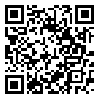Volume 15, Issue 4 (Winter 2021)
jmed 2021, 15(4): 260-270 |
Back to browse issues page
Download citation:
BibTeX | RIS | EndNote | Medlars | ProCite | Reference Manager | RefWorks
Send citation to:



BibTeX | RIS | EndNote | Medlars | ProCite | Reference Manager | RefWorks
Send citation to:
Kazemi T, Zare Bidaki M, Gholami manzari A H, Amirabadizadeh N, Mohammadi Y. Comparison of the effectiveness of lecture and mixed training methods for the diagnosis and treatment of dyslipidemia topic on the academic motivation of medical clerks and interns. jmed 2021; 15 (4) :260-270
URL: http://jmed.ssu.ac.ir/article-1-1161-en.html
URL: http://jmed.ssu.ac.ir/article-1-1161-en.html
Toba Kazemi 

 , Majid Zare Bidaki
, Majid Zare Bidaki 

 , Amir Hossein Gholami manzari
, Amir Hossein Gholami manzari 

 , Nasrin Amirabadizadeh
, Nasrin Amirabadizadeh 

 , Yahya Mohammadi *
, Yahya Mohammadi * 




 , Majid Zare Bidaki
, Majid Zare Bidaki 

 , Amir Hossein Gholami manzari
, Amir Hossein Gholami manzari 

 , Nasrin Amirabadizadeh
, Nasrin Amirabadizadeh 

 , Yahya Mohammadi *
, Yahya Mohammadi * 


PhD in Curriculum Planning, Center for the Study and Development of Medical Education Birjand University of Medical Sciences, Birjand, Iran , y_mohammady_29@yahoo.com
Abstract: (2471 Views)
Introduction: Academic motivation of students in universities is one of the highly important issues in the higher education and university system of any country and is one of the significant indicators in evaluating the quality of the higher education system. One of the important and influential factors on students' academic motivation is the teaching method of faculties in the classroom. Therefore, this study aimed to compare the effectiveness of lecture and mixed training methods for the diagnosis and treatment of dyslipidemia topic on the academic motivation of medical clerks and interns.
Methods: This is a quasi-experimental study (pre-test, post-test, and a control group), which was performed with 100 clerks and interns in the cardiology department of Birjand University of Medical Sciences. The study samples were randomly assigned into two groups (n = 50 cases; n = 50 controls). The subject matter of diagnosis and treatment of dyslipidemia was taught for 4 hours (2 h per week) using the lecture (traditional) method in the control group and mixed method in the case group. A 20-item researcher-made motivation questionnaire was used to collect data. The data were analyzed in SPSS software version 22 using the independent and paired t-test. The significance level was set at P < 0.05.
Result: The results showed that the mean and standard deviation values of academic motivation at baseline were 65.6 ± 4.47 in the case group and 64.68 ± 6.75 in the control group. In the post-intervention phase, these were 68.42 ± 4.64 in the cases and. 64.4 ± 4.13 in the controls. Therefore, mixed education has a significant effect on the academic motivation of clerks and interns at the significant level of P < 0.05.
Conclusion: The academic motivation of students who were taught using the mixed method was higher than that of the lecture method. Therefore, it is recommended that teachers use mixed teaching methods in the classroom.
Methods: This is a quasi-experimental study (pre-test, post-test, and a control group), which was performed with 100 clerks and interns in the cardiology department of Birjand University of Medical Sciences. The study samples were randomly assigned into two groups (n = 50 cases; n = 50 controls). The subject matter of diagnosis and treatment of dyslipidemia was taught for 4 hours (2 h per week) using the lecture (traditional) method in the control group and mixed method in the case group. A 20-item researcher-made motivation questionnaire was used to collect data. The data were analyzed in SPSS software version 22 using the independent and paired t-test. The significance level was set at P < 0.05.
Result: The results showed that the mean and standard deviation values of academic motivation at baseline were 65.6 ± 4.47 in the case group and 64.68 ± 6.75 in the control group. In the post-intervention phase, these were 68.42 ± 4.64 in the cases and. 64.4 ± 4.13 in the controls. Therefore, mixed education has a significant effect on the academic motivation of clerks and interns at the significant level of P < 0.05.
Conclusion: The academic motivation of students who were taught using the mixed method was higher than that of the lecture method. Therefore, it is recommended that teachers use mixed teaching methods in the classroom.
Type of Study: Research |
Subject:
Medical Education
Received: 2020/11/4 | Accepted: 2020/11/11 | Published: 2021/03/18
Received: 2020/11/4 | Accepted: 2020/11/11 | Published: 2021/03/18
Send email to the article author
| Rights and permissions | |
 |
This work is licensed under a Creative Commons Attribution-NonCommercial 4.0 International License. |




